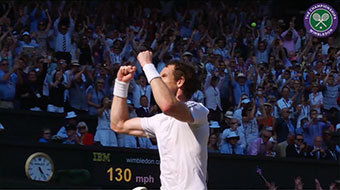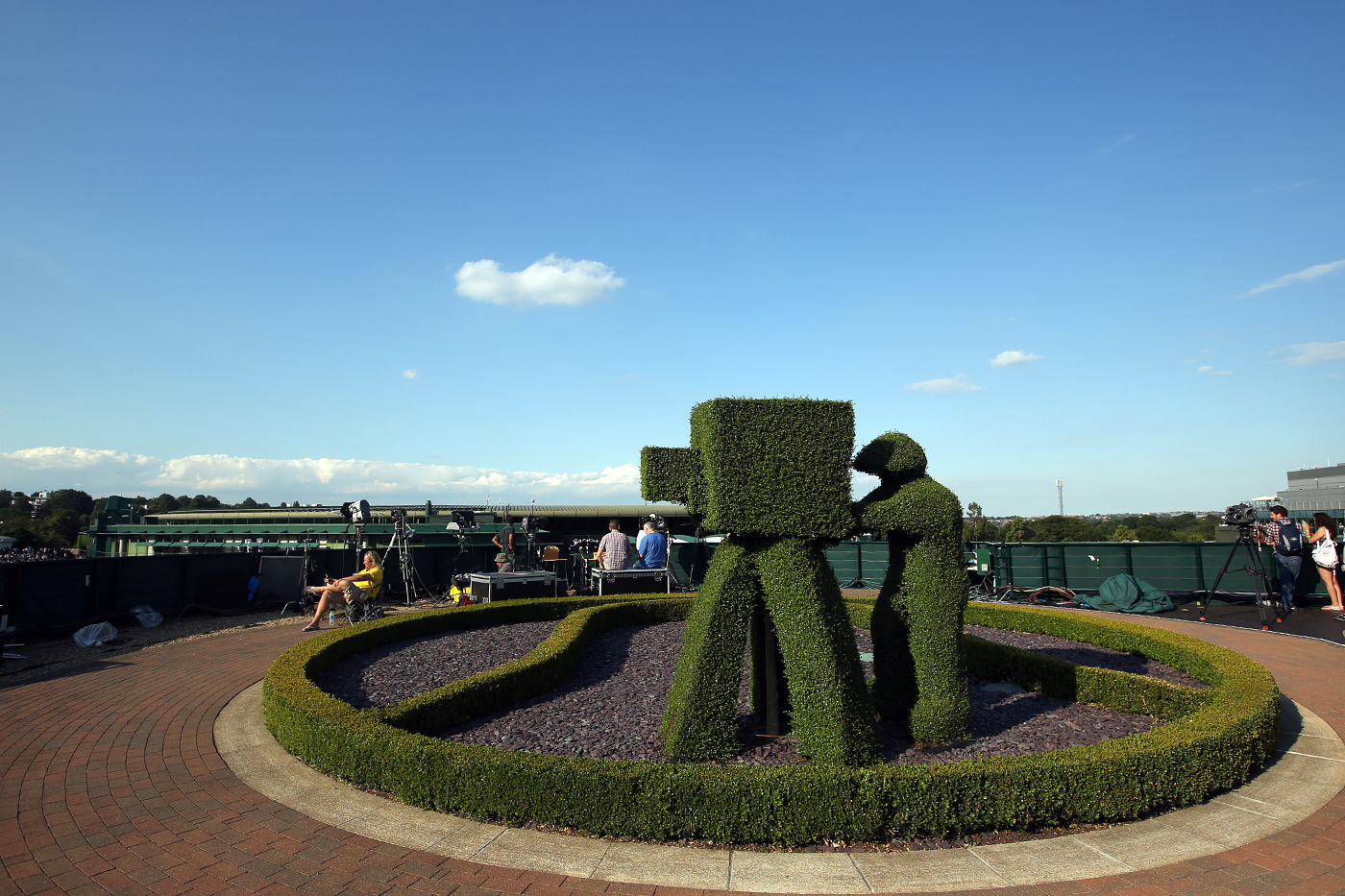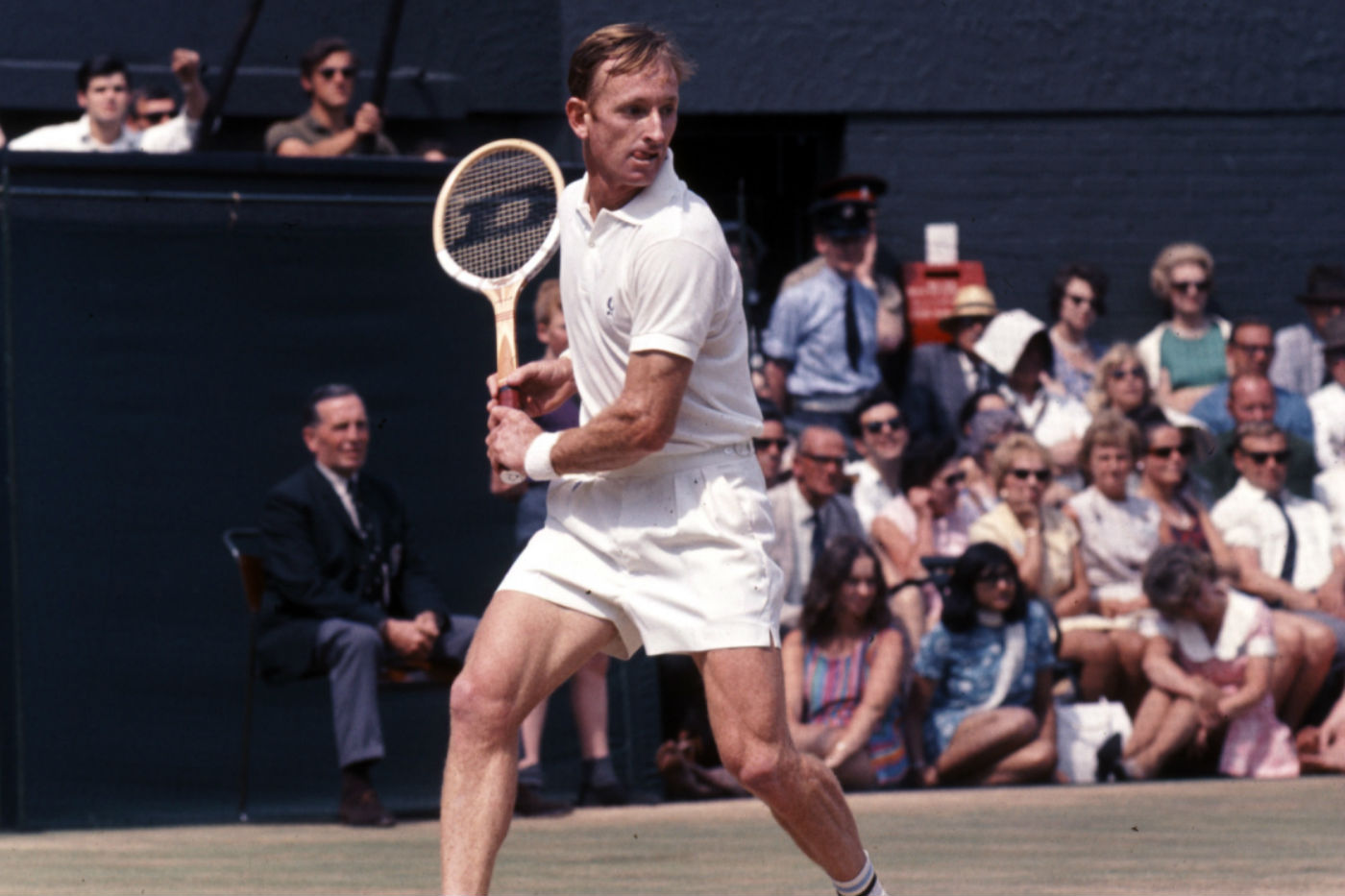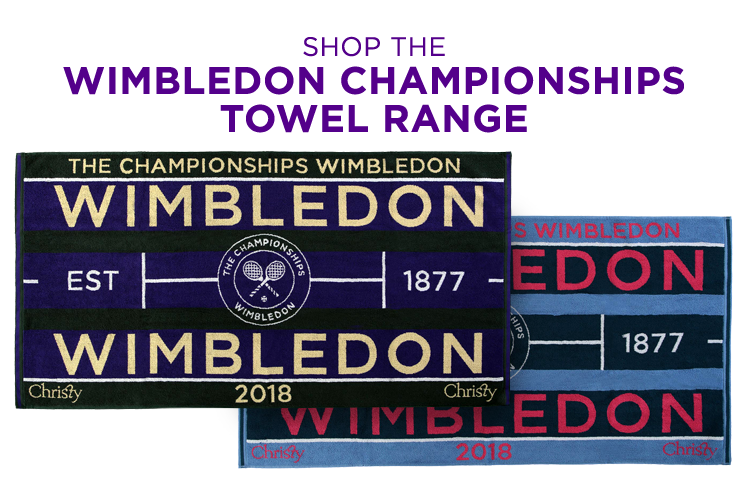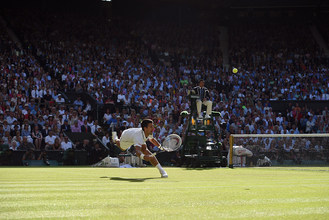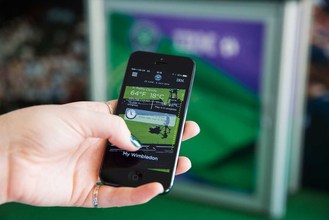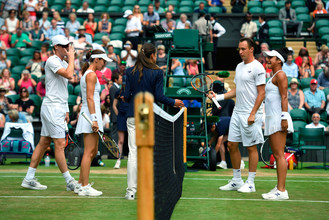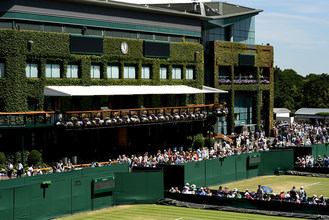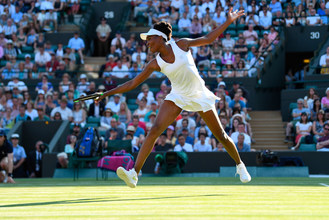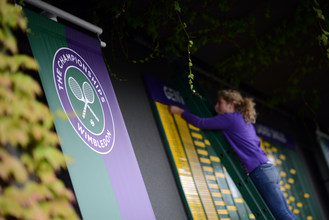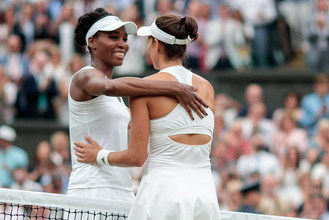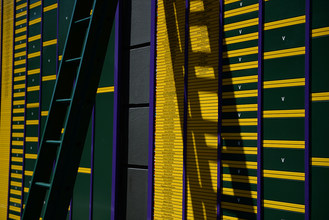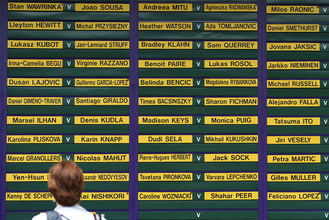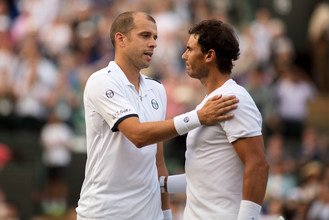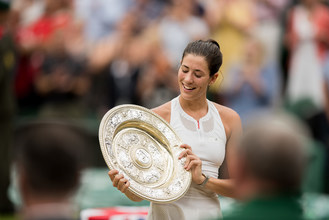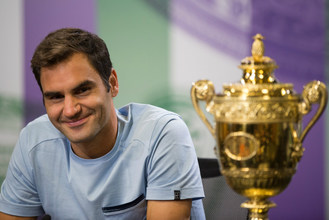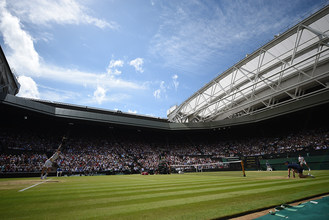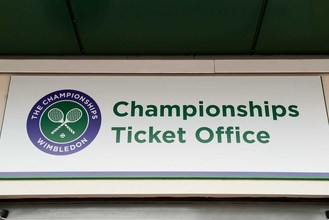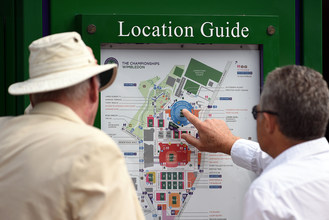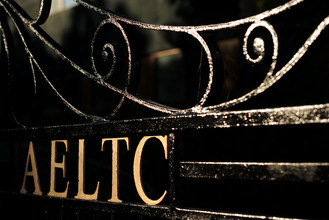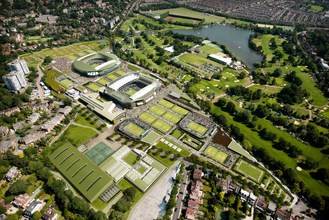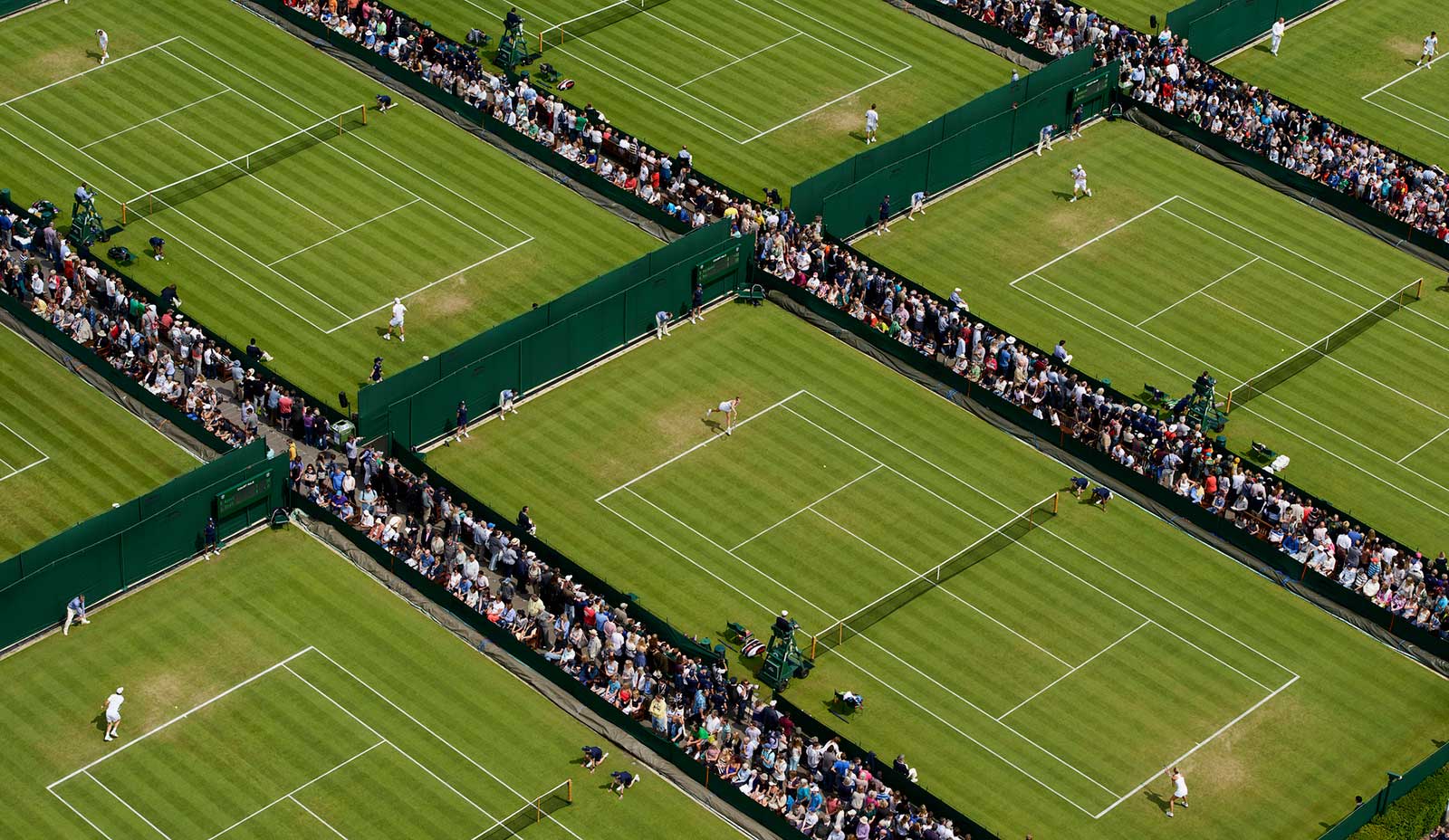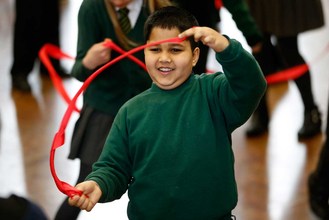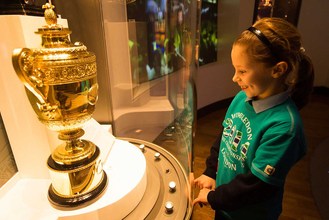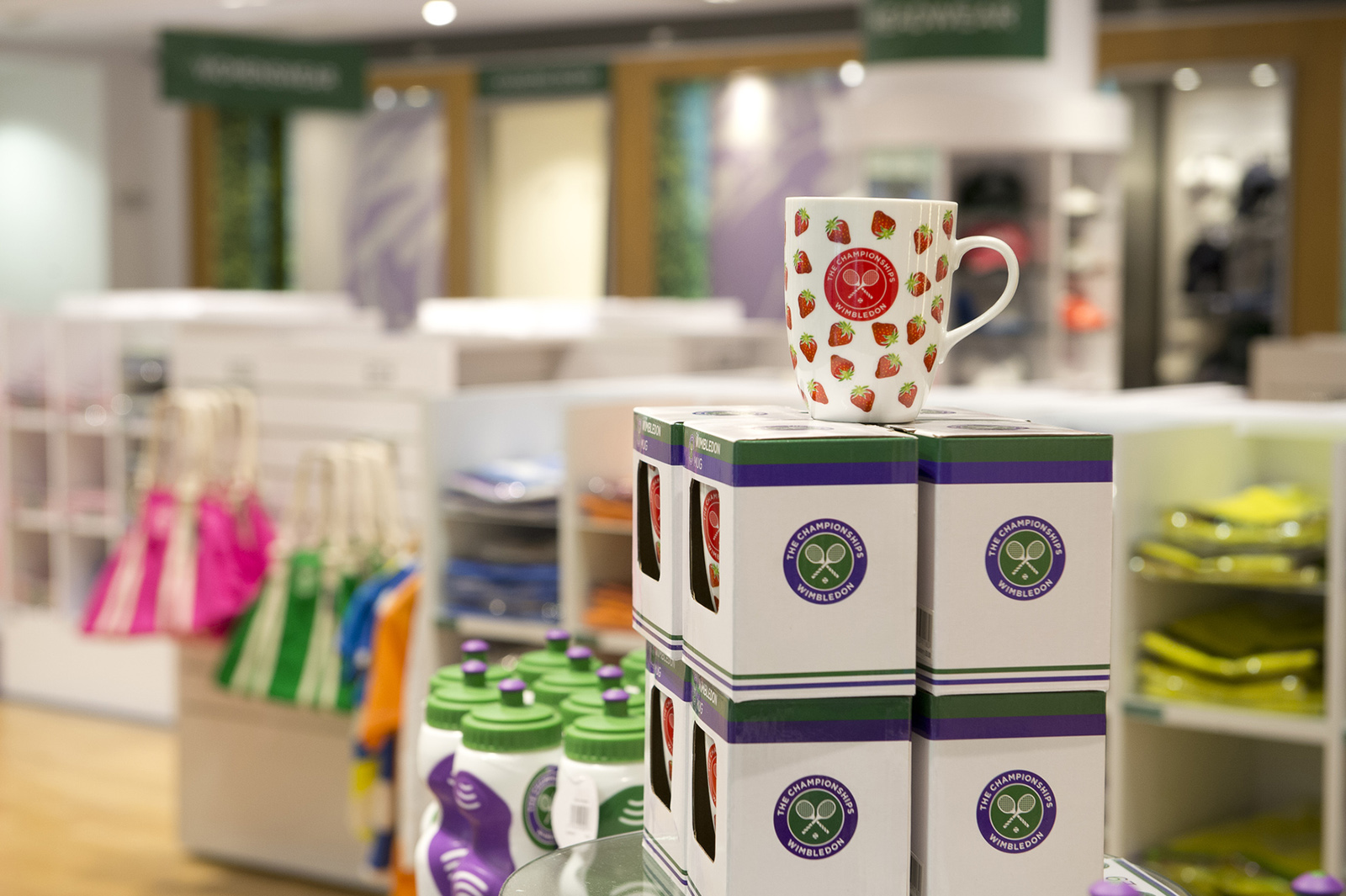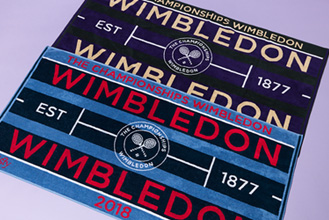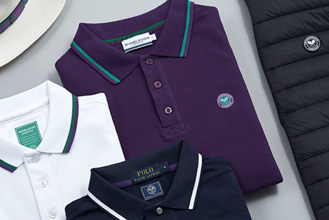The irony of Germany’s Wilhelm Bungert beating Britain’s Roger Taylor to reach the gentlemen’s singles final at The Championships of 1967 would not have been lost on David Attenborough.
The then Controller of BBC Two had been involved that year in a race with television companies from Germany, France and the Netherlands to become the first European broadcaster to launch a regular colour service.
Attenborough was the driving force as the BBC won that particular contest by bringing forward their scheduled launch date by five months with live colour coverage from Wimbledon.
Saturday 1 July marks the 50th anniversary of that first colour broadcast from The Championships. It is one of three significant anniversaries this year in the historic partnership between Wimbledon and the BBC. The Championships of 1927 were the first to be broadcast on radio, while 1937 was the first year of black-and-white television coverage.
Colour TV was just one of many changes sweeping through all walks of life in the 1960s. For tennis, it was a time of major upheaval as the sport made the first moves to end the long-time divide between the amateur and professional games.
With the All England Club leading the way in the move towards open tennis, The Championships of 1967 were the last to be contested only by amateurs. As early as 1959 Herman David, the enlightened chairman of Wimbledon, had called for an end to the “living lie” under which so-called amateurs received under-the-counter payments from tournaments around the world.
It was in frustration at the refusal of the international tennis authorities to move with the times that the All England Club launched what proved to be a decisive strike. Shortly before The Championships of 1967, the Club announced that it would stage the “Wimbledon World Lawn Tennis Professional Championships” later that summer in collaboration with the BBC.
It would feature eight of the world’s top professionals, including Rod Laver, Lew Hoad and Pancho Gonzales, and would be the first time that any of the world’s major tennis countries welcomed professional players into one of the sport’s historic venues.
By the end of the year the Lawn Tennis Association had backed the All England Club’s plan to open The Championships of 1968 to professionals and in the spring of 1968 the International Lawn Tennis Federation finally accepted that the days of amateur tennis were over. Nevertheless, the ILTF’s reluctance to embrace fully the concept of open tennis meant that the sport would remain in turmoil for some years to come.
For those who could see the way tennis was heading, The Championships of 1967 might therefore have been seen as a last chance of glory for some of the men who were continuing to compete as amateurs. The returning Laver would confirm his status as the finest player of his age by winning the first open Wimbledons in 1968 and 1969.
Although Laver, Hoad, Ken Rosewall and Fred Stolle were all barred from The Championships as professionals, the 128-strong field for the gentlemen’s singles in 1967 was still dominated by Australians, who had won the title eight times in the previous 11 years. Five of the eight seeds were Australians and there were a total of 20 Aussies in the field. There were 15 Americans and 13 British players.
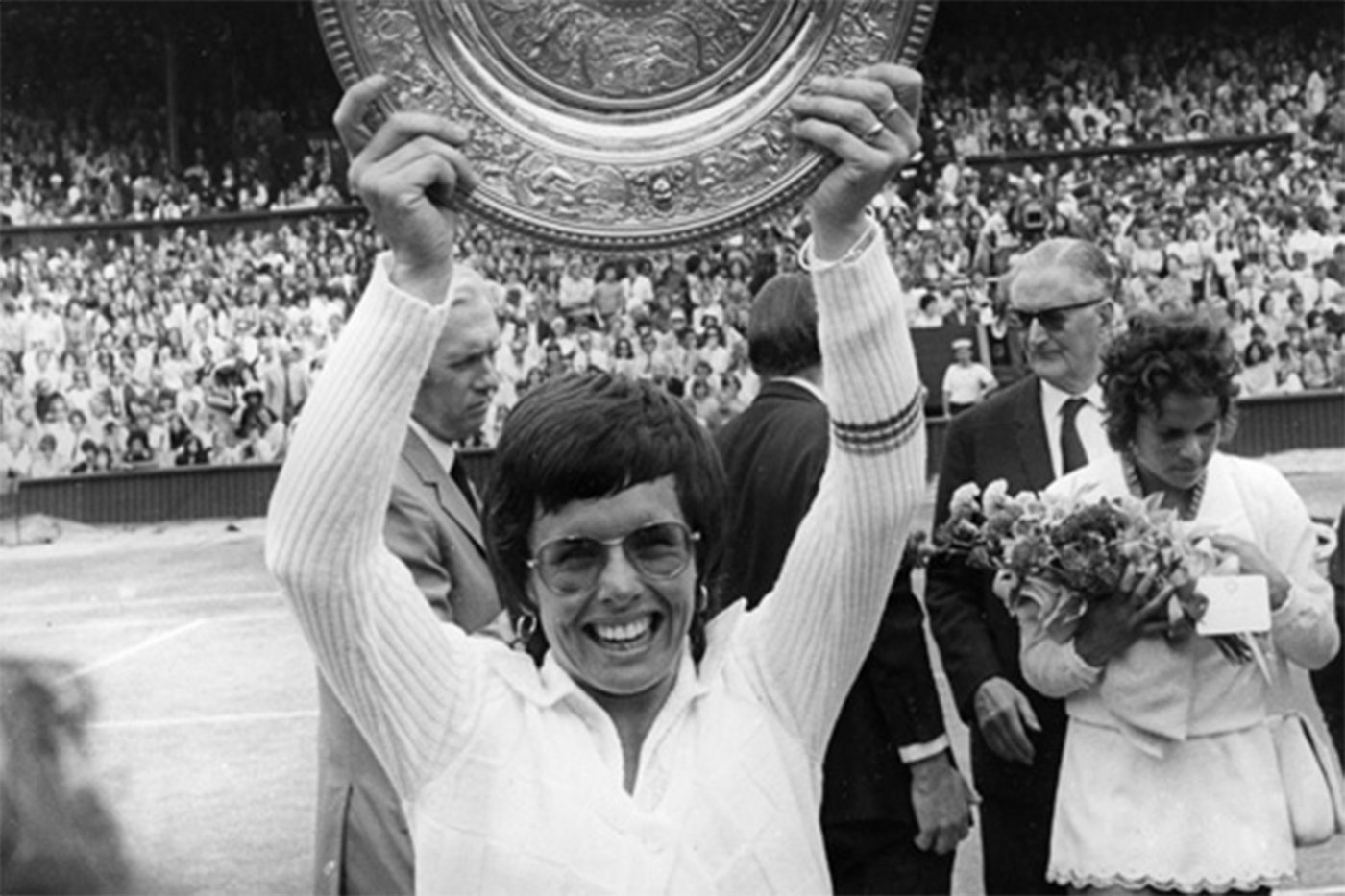
In the 96-strong field for the ladies’ singles (it was not until 1983 that the competition was expanded to a 128-draw) there were 20 Americans, 20 Britons and 13 Australians. While Australians had been dominating the men’s game, Americans had won 15 of the 21 ladies’ singles titles at The Championships since the war. Over the years a handful of ladies had left the amateur ranks, but professionalism was a much bigger issue among the men.
The Championships of 1967 got off to a remarkable start as Manolo Santana became the first No.1 seed and defending champion to lose in the first round when he was beaten 8-10, 3-6, 6-2, 6-8 by Charlie Pasarell, of the United States. The only time it has happened subsequently was in 2003, when Lleyton Hewitt lost to Ivo Karlovic.
None of the four seeds in the top half of the draw made it to the quarter-finals. Tony Roche lost a marathon second-round match to Cliff Richey, who came back from two sets down to win 3-6, 3-6, 19-17, 14-12, 6-3, and Britain’s Bobby Wilson and Taylor accounted for Bill Bowrey and Cliff Drysdale in the third and fourth rounds respectively. Taylor went on to beat Ray Ruffels in straight sets to reach the first of his three singles semi-finals at The Championships, only to be outgunned by Bungert.
In the bottom half of the draw Roy Emerson, the No.2 seed and champion in 1964 and 1965, lost in the fourth round to Nikki Pilic. That cleared the way for another Australian, John Newcombe, the No.3 seed, to make his first final, having not gone beyond the fourth round in his six previous appearances at The Championships.
The big-serving Bungert made the first break of serve in the final and had three points to go 3-1 up, but that was as good as it got for the German, who took only three more games as Newcombe won 6-3, 6-1, 6-1 in one of the most one-sided finals in Wimbledon history. It was the first of three singles triumphs on Centre Court for “Newk”, who combined strength and power with a great tennis brain.
In the ladies’ singles Billie Jean King was in the process of imposing herself as a dominant force in the game. Having claimed her first Wimbledon singles title 12 months earlier, the American won her second in emphatic fashion. She did not drop a set and dashed home hopes by beating Virginia Wade in the quarter-finals and Ann Jones in the final. Jones, who lost 3-6, 4-6, would avenge that defeat in the final two years later.
King also became only the fifth player in history (and the first for 16 years) to win the ladies’ singles, ladies’ doubles and mixed doubles in the same year. King and Rosie Casals enjoyed a hard-fought 9-11, 6-4, 6-2 victory over Maria Bueno and Nancy Richey in the ladies’ doubles final and in the mixed King and Owen Davidson beat Ken Fletcher and Maria Bueno 7-5, 6-2. Bob Hewitt and Frew McMillan won the gentlemen’s doubles, beating Emerson and Fletcher 6-2, 6-3, 6-4 in the final.
Follow the latest news and scores from Wimbledon 2017 on Wimbledon.com or Apple TV, or download the official IOS or Android apps for smartphone and tablet.

